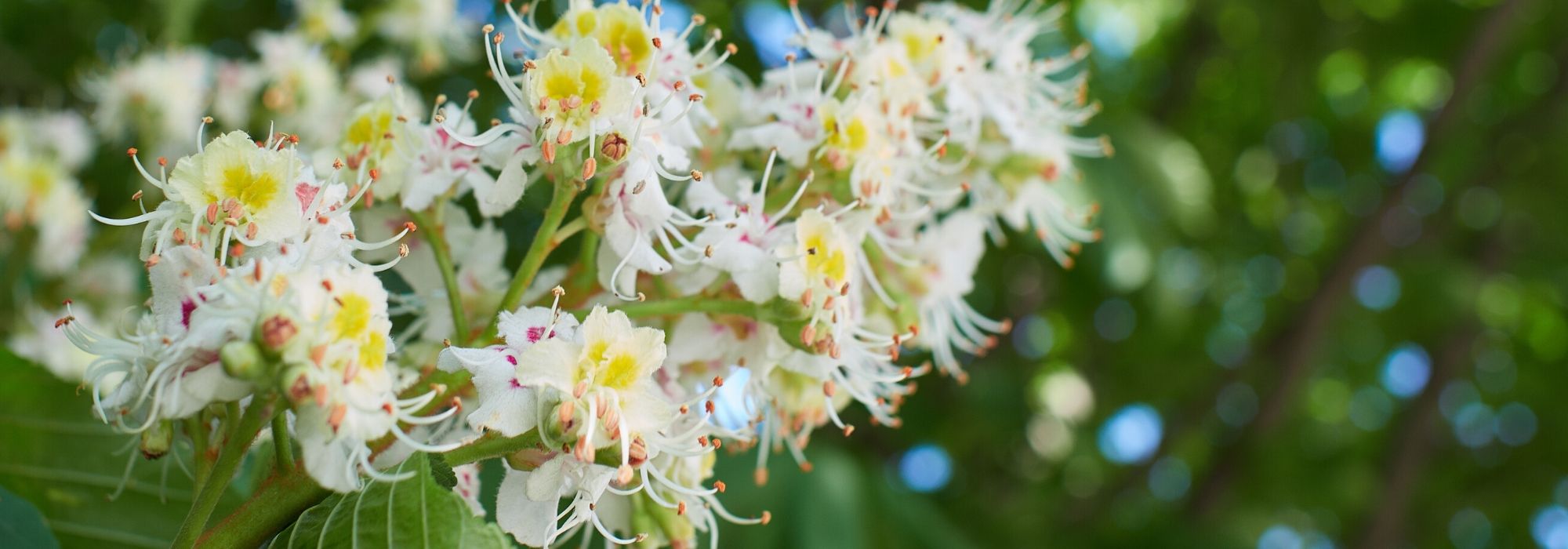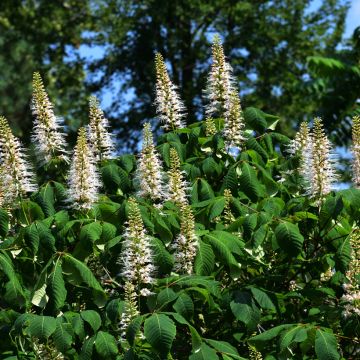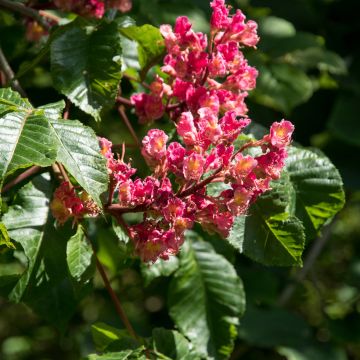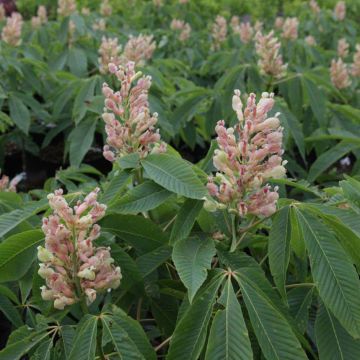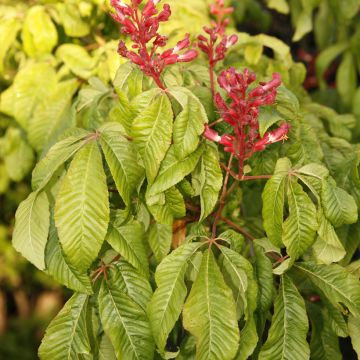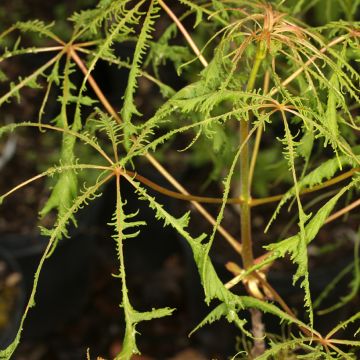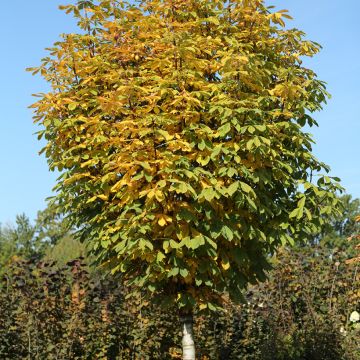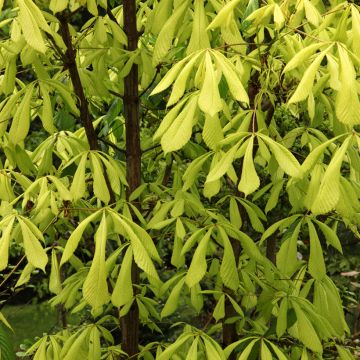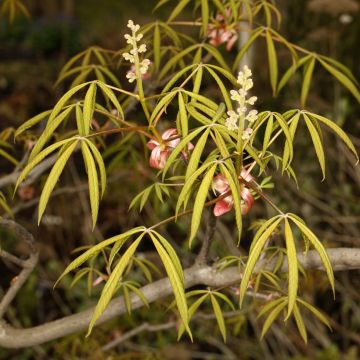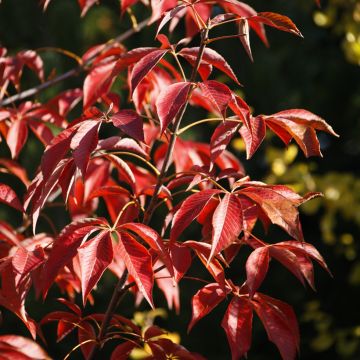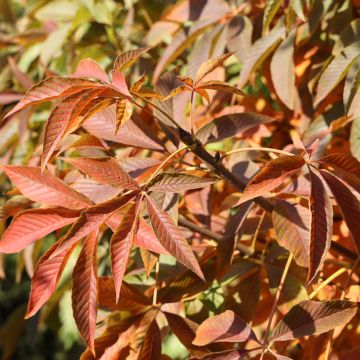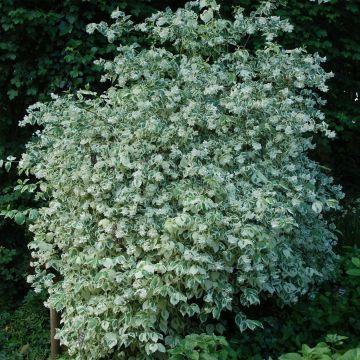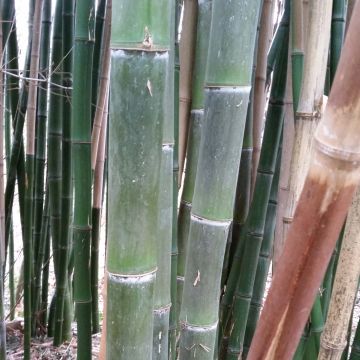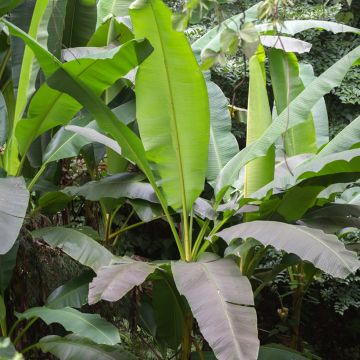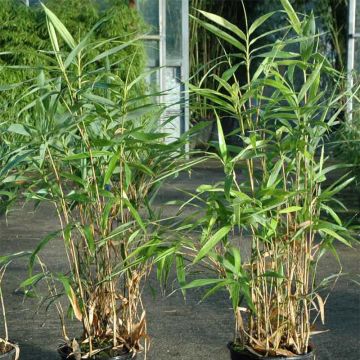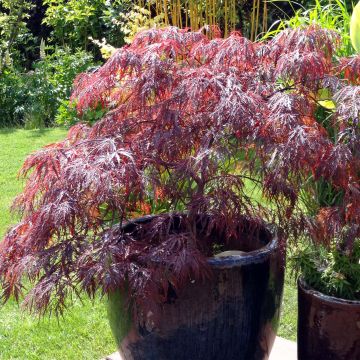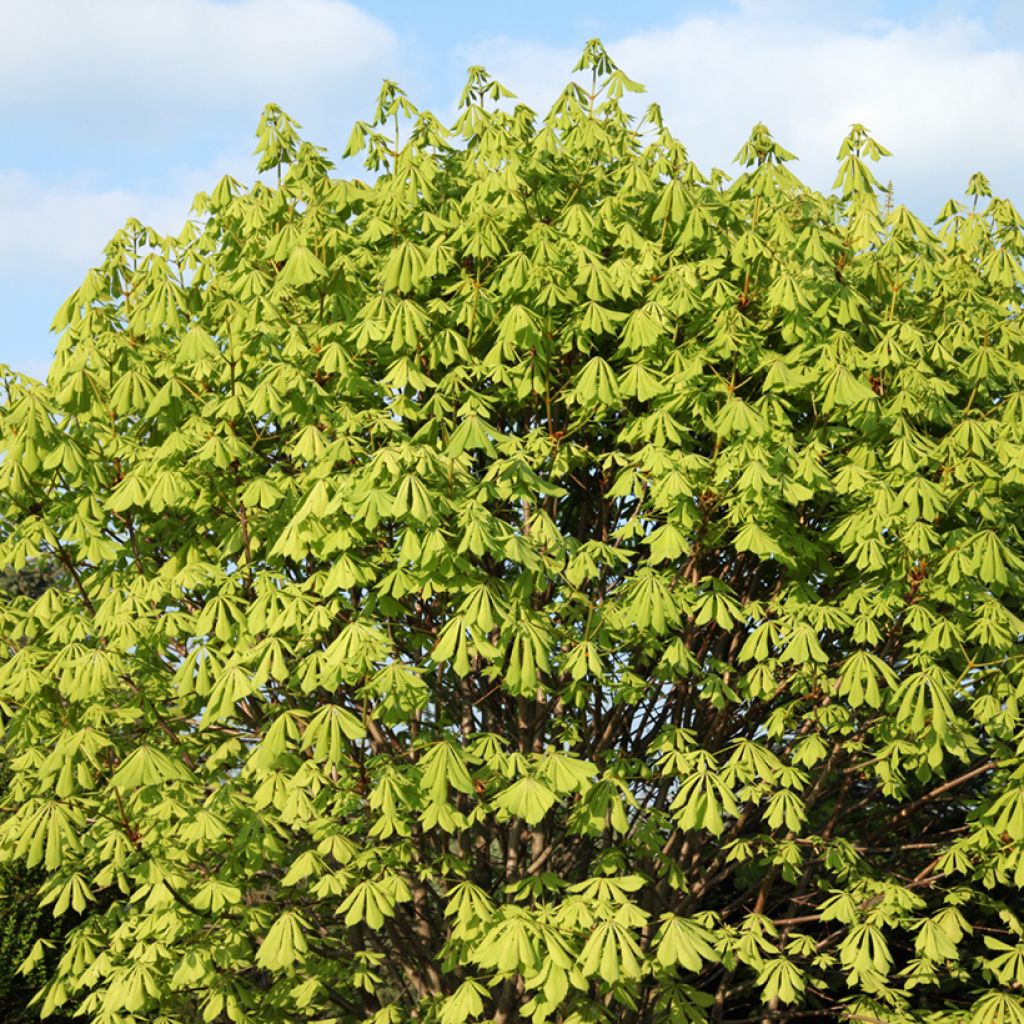

Aesculus hippocastanum Memmingeri
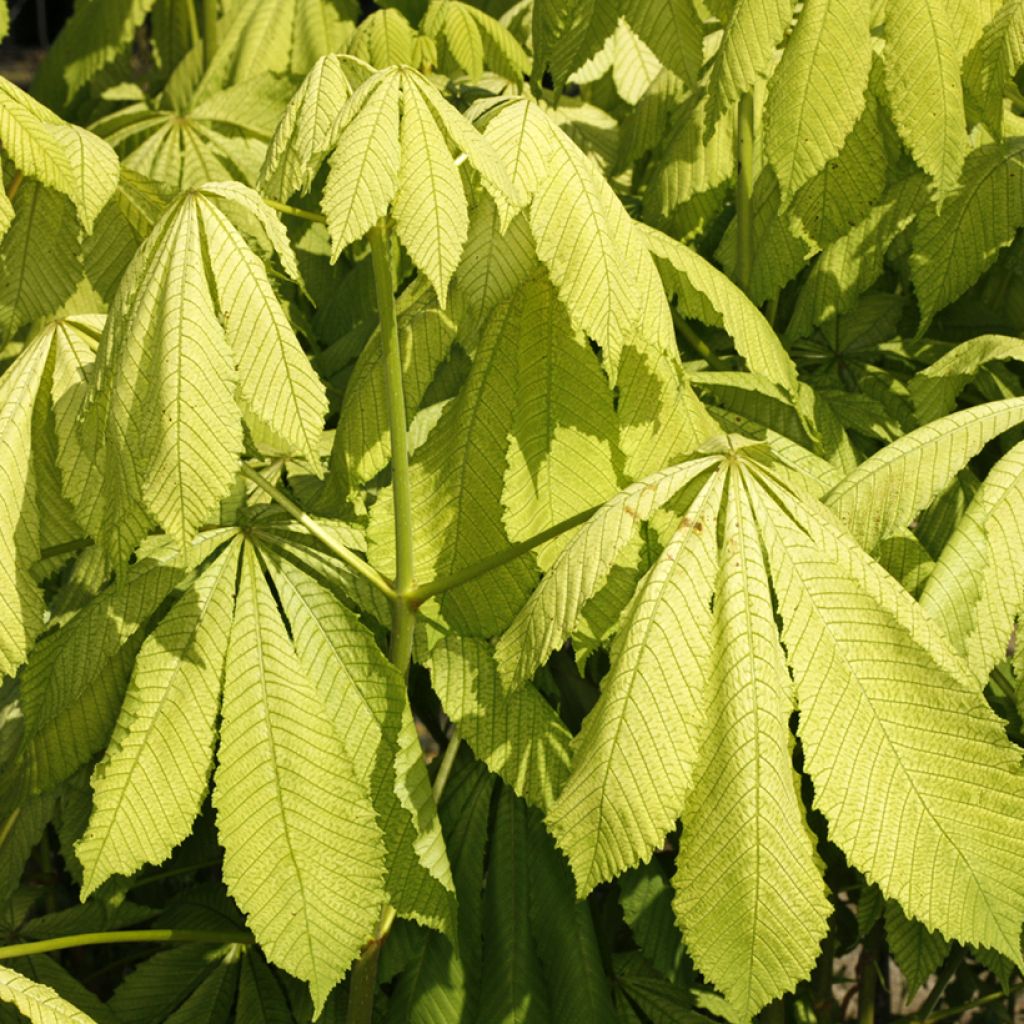

Aesculus hippocastanum Memmingeri
Aesculus hippocastanum Memmingeri
Aesculus hippocastanum Memmingeri
Horse Chestnut, Conker Tree
Special offer!
Receive a €20 voucher for any order over €90 (excluding delivery costs, credit notes, and plastic-free options)!
1- Add your favorite plants to your cart.
2- Once you have reached €90, confirm your order (you can even choose the delivery date!).
3- As soon as your order is shipped, you will receive an email containing your voucher code, valid for 3 months (90 days).
Your voucher is unique and can only be used once, for any order with a minimum value of €20, excluding delivery costs.
Can be combined with other current offers, non-divisible and non-refundable.
Home or relay delivery (depending on size and destination)
Schedule delivery date,
and select date in basket
This plant carries a 24 months recovery warranty
More information
We guarantee the quality of our plants for a full growing cycle, and will replace at our expense any plant that fails to recover under normal climatic and planting conditions.
Would this plant suit my garden?
Set up your Plantfit profile →
Description
The Aesculus hippocastanum 'Memmingeri' is an interesting selection of Horse Chestnut tree for its regular habit and its unusual foliage texture. Its palmate leaves have a network of delicate dark veins on a background of very pale green that tends towards cream-white. The foliage becomes greener in summer, sometimes sprinkled with white, but retains this curious reticulated pattern. The bark of this variety, finely striped with black, differs slightly from that of the classic Horse Chestnut. Otherwise, this large tree has the same characteristics and requires the same growing conditions.
The Aesculus hippocastanum 'Memmingeri' is a horticultural selection of unknown origin described in 1855 in Germany. It is named after Gustav Memminger, a gardener from Verdun. This tree belongs to the family Sapindaceae or Hippocastanaceae, which is classified according to different classifications. Contrary to what its common name of Horse Chestnut suggests, the species is native to Macedonia, including northern Greece, Albania, and southern Bulgaria. It is a forest species.
Growing more or less rapidly depending on the soil and climate, 'Memmingeri' Horse Chestnut can reach a height of 20 to 25 m with a spread of 15 to 20 m. It develops a straight trunk, covered with brown to reddish bark, initially smooth, becoming grey with black fissures as it ages. The crown is wide, pyramid-shaped, and regular. The deciduous foliage appears in spring and falls in autumn. Large reddish buds covered with shiny resin can be seen on the branches in winter. The foliage consists of large leaves measuring 30 to 50 cm long, divided into 5 to 7 toothed leaflets, carried on a long petiole. Flowering occurs in May-June on branches that are already leafed out. It forms large upright pyramidal clusters, called thyrses, measuring 20-25 cm long, composed of numerous tiny flowers 1 cm wide, white with pink spots. After pollination by insects, the characteristic fruits form rounded and bristly. Each fruit can measure up to 4 cm in diameter and contains only one large seed. Its root system is deep and powerful.
'Memmingeri' Horse Chestnut tolerates any deep soil that remains somewhat moist, even if it is limestone. It can be planted as a solitary specimen, in a well-cleared location, on a large lawn, or as a shade tree in a park or large garden. It also looks good on the edge of a large plot overlooking the countryside. Consider its future growth before adopting it in the garden. You can plant it in all regions, but it will become taller and more beautiful if it benefits from a slightly humid climate. In the Mediterranean region, it loses its leaves prematurely without seeming to harm its health.
Aesculus hippocastanum Memmingeri in pictures


Plant habit
Flowering
Foliage
Botanical data
Aesculus
hippocastanum
Memmingeri
Sapindaceae
Horse Chestnut, Conker Tree
Cultivar or hybrid
Other Aesculus - Horse Chestnut
View all →Planting and care
Horse Chestnut 'Memmingeri' should be planted in ordinary, deep spring or autumn soil, preferably relatively rich, slightly acidic, neutral or moderately chalky. Plant in a sunny or semi-shady position where it can be seen clearly. Water and mulch to keep the soil cool for young plants. Once well rooted, it will be content with being watered by rain. To limit pest attacks (rarely fatal), collect the leaves in autumn and dispose of them. Trapping male moths with a pheromone (funnel trap) limits attacks.
Planting period
Intended location
Care
Planting & care advice
This item has not been reviewed yet - be the first to leave a review about it.
Similar products
Haven't found what you were looking for?
Hardiness is the lowest winter temperature a plant can endure without suffering serious damage or even dying. However, hardiness is affected by location (a sheltered area, such as a patio), protection (winter cover) and soil type (hardiness is improved by well-drained soil).

Photo Sharing Terms & Conditions
In order to encourage gardeners to interact and share their experiences, Promesse de fleurs offers various media enabling content to be uploaded onto its Site - in particular via the ‘Photo sharing’ module.
The User agrees to refrain from:
- Posting any content that is illegal, prejudicial, insulting, racist, inciteful to hatred, revisionist, contrary to public decency, that infringes on privacy or on the privacy rights of third parties, in particular the publicity rights of persons and goods, intellectual property rights, or the right to privacy.
- Submitting content on behalf of a third party;
- Impersonate the identity of a third party and/or publish any personal information about a third party;
In general, the User undertakes to refrain from any unethical behaviour.
All Content (in particular text, comments, files, images, photos, videos, creative works, etc.), which may be subject to property or intellectual property rights, image or other private rights, shall remain the property of the User, subject to the limited rights granted by the terms of the licence granted by Promesse de fleurs as stated below. Users are at liberty to publish or not to publish such Content on the Site, notably via the ‘Photo Sharing’ facility, and accept that this Content shall be made public and freely accessible, notably on the Internet.
Users further acknowledge, undertake to have ,and guarantee that they hold all necessary rights and permissions to publish such material on the Site, in particular with regard to the legislation in force pertaining to any privacy, property, intellectual property, image, or contractual rights, or rights of any other nature. By publishing such Content on the Site, Users acknowledge accepting full liability as publishers of the Content within the meaning of the law, and grant Promesse de fleurs, free of charge, an inclusive, worldwide licence for the said Content for the entire duration of its publication, including all reproduction, representation, up/downloading, displaying, performing, transmission, and storage rights.
Users also grant permission for their name to be linked to the Content and accept that this link may not always be made available.
By engaging in posting material, Users consent to their Content becoming automatically accessible on the Internet, in particular on other sites and/or blogs and/or web pages of the Promesse de fleurs site, including in particular social pages and the Promesse de fleurs catalogue.
Users may secure the removal of entrusted content free of charge by issuing a simple request via our contact form.
The flowering period indicated on our website applies to countries and regions located in USDA zone 8 (France, the United Kingdom, Ireland, the Netherlands, etc.)
It will vary according to where you live:
- In zones 9 to 10 (Italy, Spain, Greece, etc.), flowering will occur about 2 to 4 weeks earlier.
- In zones 6 to 7 (Germany, Poland, Slovenia, and lower mountainous regions), flowering will be delayed by 2 to 3 weeks.
- In zone 5 (Central Europe, Scandinavia), blooming will be delayed by 3 to 5 weeks.
In temperate climates, pruning of spring-flowering shrubs (forsythia, spireas, etc.) should be done just after flowering.
Pruning of summer-flowering shrubs (Indian Lilac, Perovskia, etc.) can be done in winter or spring.
In cold regions as well as with frost-sensitive plants, avoid pruning too early when severe frosts may still occur.
The planting period indicated on our website applies to countries and regions located in USDA zone 8 (France, United Kingdom, Ireland, Netherlands).
It will vary according to where you live:
- In Mediterranean zones (Marseille, Madrid, Milan, etc.), autumn and winter are the best planting periods.
- In continental zones (Strasbourg, Munich, Vienna, etc.), delay planting by 2 to 3 weeks in spring and bring it forward by 2 to 4 weeks in autumn.
- In mountainous regions (the Alps, Pyrenees, Carpathians, etc.), it is best to plant in late spring (May-June) or late summer (August-September).
The harvesting period indicated on our website applies to countries and regions in USDA zone 8 (France, England, Ireland, the Netherlands).
In colder areas (Scandinavia, Poland, Austria...) fruit and vegetable harvests are likely to be delayed by 3-4 weeks.
In warmer areas (Italy, Spain, Greece, etc.), harvesting will probably take place earlier, depending on weather conditions.
The sowing periods indicated on our website apply to countries and regions within USDA Zone 8 (France, UK, Ireland, Netherlands).
In colder areas (Scandinavia, Poland, Austria...), delay any outdoor sowing by 3-4 weeks, or sow under glass.
In warmer climes (Italy, Spain, Greece, etc.), bring outdoor sowing forward by a few weeks.






























